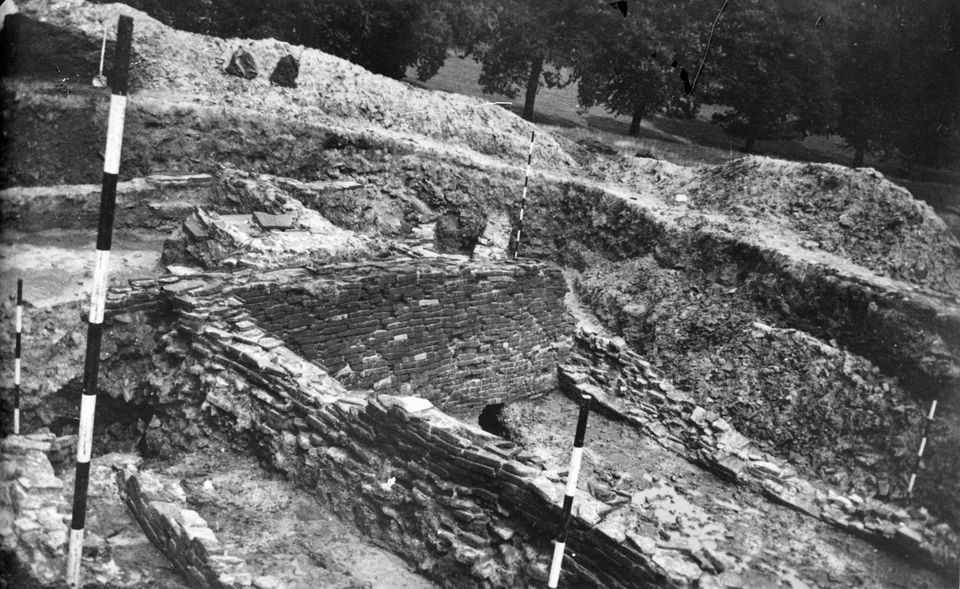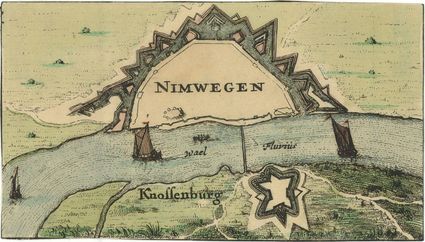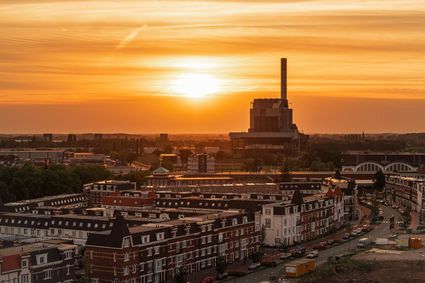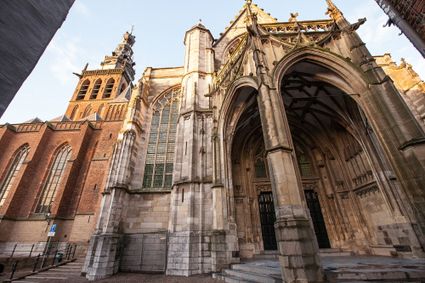A Merovingian elite, between the Roman period and the Middle Ages
Nijmegen is bursting at the seams with historical stories, ranging from leading figures to ordinary people, from neighbourhoods to political events. The Canon of Nijmegen encompasses the most important stories about Nijmegen’s history. One of these stories tells the tale of the departure of the Romans in the region and the rise of the Merovingian elite. After Cologne was captured by the Franks at the middle of the fifth century, the Roman authority in the region definitively ended. The Frankish kings (Merovingians) considered themselves the legitimate successors to the Roman emperors, which is why the Merovingians appropriated the Roman settlements, including Nijmegen.
Early 4th century – arrival of the Merovingians
At the start of the fourth century, the Romans built a fort on the Valkhof. Around the same time, a small settlement had risen next to the fort, on the bank of the Waal river. During archaeological research in 1985-1987, prior to the construction of the casino on the Waalkade, a tuff wall was uncovered that stretched about eighty metres. This wall was almost one and a half metres thick and, originally, more than two metres high, and was most likely built for protection. The inhabitants of the settlement buried their dead on the higher parts South of the wall. One of these inhabitants, who died sometime in the fourth century, was nicknamed “the Lead Lady,” because her remains were discovered in a lead sarcophagus underneath the Burchtstraat in 2001. Modern reconstruction methods have created an approximation of her face. When the Merovingians arrived, they appropriated both the fort at the Valkhof and the settlement on the banks of the Waal river.
Archaeological research
The Merovingians most likely managed the vast royal reams surrounding Nijmegen from the Roman fort. The fourth-century burial grounds remained in use. In 1999, several graves from the late fifth and early sixth centuries were found between the Raadhuisstraat and Burchtstraat. These graves laid at the foot of a burial mound where a very important person must’ve been buried. These graves contained remarkable finds, like iron axes and a large iron lance tip –one of the bodies was even covered in gold brocade fabric.
The North of Nijmegen was also inhabited during the Merovingian period, which was uncovered by the excavation of a burial ground on the Azaleastraat, where a Merovingian elite had buried their dead in the seventh and eighth centuries. In the immediate vicinity of the burial field, the remains of a late Roman building were unearthed. In 2006, archaeological research at the Lentseveld yielded a very special Merovingian find: a piece of hardware, decorated with gold and amandine, a precious stone. The fitting was at the end of the fifth or the start of the sixth century. At some point, it probably embellished the upper edge of a leather sword scabbard.
Immerse yourself in the rich history of the oldest city in the Netherlands, because Nijmegen has a lot of stories to tell you. Curious? You can read all about it in this historical timeline.



